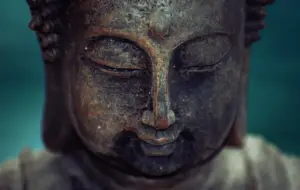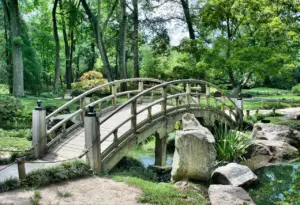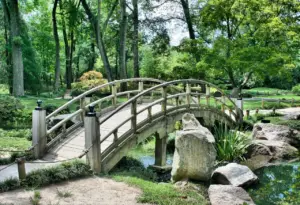Are you interested in exploring the spiritual practices of Buddhism in Japan? The Japanese have a long history with Buddhism, with the religion arriving in the country in the 6th century.
Over time, different sects of Buddhism emerged, each with their own unique practices and beliefs. Visiting traditional Buddhist temples in Japan can be a fascinating experience, as you witness the intricate ceremonies and beautiful art and architecture.
Meditation is also a crucial aspect of Buddhism, and you can find many opportunities to practice in Japan. Whether you are seeking enlightenment or simply interested in learning more about this ancient religion, delving into the world of Buddhism in Japan can be a transformative experience.
Key Takeaways
- Buddhism arrived in Japan in the 6th century and has since become home to several sects with different teachings and practices.
- Traditional temple ceremonies involve chanting, offering, and meditation practices such as zazen and kinhin.
- Buddhist art and architecture showcase the intricate and symbolic nature of the religion, with sculptures of Buddha and other important figures being prominent.
- The philosophy of Buddhism emphasizes the path to enlightenment through the Four Noble Truths and Eightfold Path, and has influenced Japanese society and culture significantly.
History of Buddhism in Japan
You might be surprised to learn that Buddhism didn’t become established in Japan until the 6th century, when it was brought over from China and Korea by monks and scholars. Despite this, Buddhism has become deeply ingrained in Japanese culture and society over the centuries.
In fact, today Japan is home to several sects of Buddhism, with millions of followers across the country. One of the most influential figures in the spread of Buddhism in Japan was Prince Shotoku, who lived in the 6th century. He’s credited with introducing the religion to the Japanese court and creating a framework for its practice in Japan.
Over time, different sects of Buddhism emerged in Japan, each with its own unique teachings and practices. Today, Zen Buddhism is one of the most well-known and widely practiced sects in Japan, and it’s had a significant impact on Japanese culture and art.
Different Buddhist Sects in Japan
There are various Buddhist sects in Japan, each with their own distinct teachings and practices. Among the most widely known are the Pure Land, Nichiren, Shingon, and Zen sects, which all have their roots in different regions and periods of Japanese history.
The Pure Land sect centers around the belief in Amida Buddha and his Western Paradise, where one can attain enlightenment simply by calling upon his name.
On the other hand, the Nichiren sect focuses on the Lotus Sutra as the ultimate and only true teaching of Buddhism, while the Shingon sect places great emphasis on esoteric practices and rituals.
Meanwhile, the Zen sect, which originated in China and was introduced to Japan in the 12th century, emphasizes meditation and the attainment of enlightenment through personal experience.
Despite the differences in their teachings and practices, all of these sects share the goal of helping individuals to reach enlightenment and find liberation from suffering.
Traditional Temple Ceremonies
Immerse yourself in the rich cultural experience of traditional temple ceremonies, which have been passed down for generations in Japan’s various Buddhist sects. These ceremonies are an integral part of Buddhist practice and offer an opportunity to connect with the teachings of Buddhism in a tangible way.
Here are three key elements that you can expect to see in traditional temple ceremonies:
-
Chanting: Chanting is a common practice in Buddhist ceremonies and involves reciting passages from Buddhist texts. This is believed to create a calming and meditative environment and help practitioners focus their minds on the present moment.
-
Offering: Offerings are made to the Buddha and other deities as a sign of respect and gratitude. This can include flowers, incense, and food. The act of offering is seen as a way to cultivate generosity and selflessness.
-
Prostrations: Prostrations involve bowing down and touching one’s forehead to the ground. This is done as a sign of respect and humility and is believed to help practitioners let go of their ego and develop a sense of humility.
By participating in traditional temple ceremonies, you can gain a deeper appreciation for the teachings of Buddhism and connect with a long-standing cultural tradition in Japan.
Meditation Practices
Meditation practices are an essential component of traditional temple ceremonies, allowing practitioners to cultivate a sense of inner peace and mindfulness. These practices involve focusing one’s attention on a particular object, such as a mantra, the breath, or a visual image, in order to quiet the mind and achieve a state of calm awareness. In Japan, there are many different types of meditation practices that are used in Buddhist temples, each with its own unique benefits and techniques.
One of the most popular forms of meditation in Japan is zazen, which means "seated meditation."Zazen involves sitting in a specific posture, with the back straight and the legs crossed, and focusing on the breath. This practice is designed to help practitioners develop a deep sense of concentration and awareness, which can lead to greater insight and understanding of the self. Another form of meditation that is commonly practiced in Japan is walking meditation, or kinhin. During kinhin, practitioners walk slowly and mindfully in a circle around a designated area, focusing on each step and cultivating a sense of mindfulness and presence in the moment. These and other meditation practices are an important part of Buddhist culture in Japan, and can be a powerful tool for anyone seeking to develop greater mindfulness and inner peace.
| Type of Meditation | Description | Benefits | Techniques |
|---|---|---|---|
| Zazen | Seated meditation with focus on breath | Develops concentration and awareness, leads to insight into the self | Sitting with back straight, legs crossed, and focus on breath |
| Kinhin | Walking meditation in a circle | Cultivates mindfulness and presence in the moment | Walking slowly and mindfully in a circle, focusing on each step |
The above table gives a snapshot of two popular meditation practices in Japan. Zazen and kinhin are both simple yet powerful techniques that can help practitioners develop greater mindfulness and inner peace. By incorporating these practices into one’s daily routine, it is possible to cultivate a deeper sense of awareness and understanding of the self, as well as to reduce stress and improve overall well-being. Whether one is a seasoned meditator or just starting out, there is much to be gained from exploring the rich tradition of meditation practices in Japan.
Buddhist Art and Architecture
Buddhist art and architecture in Japan showcase the intricate and symbolic nature of the religion. Various forms of expression range from temple paintings to grandiose statues. One of the most recognizable features of Japanese Buddhist architecture is the pagoda, a tower with multiple levels that represent different stages of enlightenment. Many pagodas also feature intricate carvings and decorations that incorporate Buddhist symbols and teachings.
In addition to pagodas, Buddhist temples in Japan also feature stunning artwork. Frescoes and murals depict scenes from Buddhist scripture and teachings. These paintings often use vibrant colors and intricate details to convey the complex ideas and concepts of the religion. Sculptures also play a prominent role in Japanese Buddhist art. Many temples feature large statues of Buddha and other important figures.
Overall, the art and architecture of Japanese Buddhism provide a unique and fascinating glimpse into the religion’s rich history and cultural significance.
Philosophy and Teachings of Buddhism
You’ll find that the philosophy and teachings of this ancient religion are full of wisdom and insights that can help you navigate life’s challenges and find inner peace.
Buddhism in Japan is deeply rooted in the teachings of Siddhartha Gautama, the founder of Buddhism, who sought to understand the fundamental nature of existence.
The philosophy of Buddhism emphasizes the path to enlightenment, which involves understanding the nature of suffering and the way to overcome it. To understand the teachings of Buddhism, it is essential to grasp the Four Noble Truths, which form the foundation of Buddhist philosophy.
These truths are: 1) The truth of suffering, which states that all existence is suffering; 2) The truth of the cause of suffering, which is desire and attachment; 3) The truth of the cessation of suffering, which is the end of desire and attachment; and 4) The truth of the path to the cessation of suffering, which is the Eightfold Path.
The Eightfold Path involves right understanding, right intention, right speech, right action, right livelihood, right effort, right mindfulness, and right concentration. By following the Eightfold Path, one can achieve enlightenment and overcome suffering.
Buddhist Festivals and Holidays
Get ready to celebrate with some delicious food and colorful festivities during Buddhist holidays and festivals. Japan has a rich tradition of Buddhist festivals and holidays, many of which are celebrated throughout the country. These holidays and festivals are a time for people to come together and celebrate their faith, as well as their culture and traditions.
One of the most important Buddhist holidays in Japan is Obon, which is celebrated in mid-August. During Obon, it is believed that the spirits of ancestors return to the earthly realm to visit their families. As a result, many people travel back to their hometowns to spend time with family and honor their ancestors. Obon is also a time for colorful lanterns, traditional dances, and delicious food such as grilled meat and vegetables. Other important Buddhist festivals in Japan include Setsubun, which marks the beginning of spring, and Higan, which takes place during the spring and fall equinoxes. Through these festivals and holidays, Buddhism in Japan is celebrated and passed down from generation to generation.
| Festival/Holiday | Date | Celebration |
|---|---|---|
| Obon | August 13-15 | Honoring ancestors with traditional dances and delicious food |
| Setsubun | February 3 | Driving away evil spirits with the throwing of roasted soybeans |
| Higan | Vernal and Autumnal Equinox | Celebrating the changing of the seasons and honoring ancestors |
Overall, Buddhist festivals and holidays in Japan offer a unique insight into the country’s rich culture and traditions. Whether it is through traditional dances, delicious food, or honoring the spirits of ancestors, these celebrations remain an important part of Japanese society.
Contemporary Buddhism in Japan
As you dive into the subtopic of contemporary Buddhism in Japan, you’ll discover how the religion has adapted to modern times.
Buddhism in Japan has undergone significant changes since its arrival over 1,000 years ago, and its influence can be seen in various aspects of Japanese society and culture today.
Through this exploration, you’ll gain insight into the ways in which Buddhism has evolved to remain relevant and meaningful in contemporary Japan.
Modern adaptations of Buddhism in Japan
If you’re interested in Buddhism in Japan, you might find it fascinating how modern adaptations have taken place to make the practice more accessible to younger generations. Here are three examples of how Buddhism has evolved in Japan:
-
Technology: With the rise of technology, Buddhism has found a new way to reach people. Many temples now have websites and social media accounts where they offer virtual tours, live-streaming of ceremonies, and online teachings. This has made Buddhism more accessible and convenient for those who may not have the time or means to visit a physical temple.
-
Pop culture: Buddhism has made its way into popular culture in Japan. Manga and anime series such as ‘Buddha’ and ‘Hozuki’s Coolheadedness’ have introduced Buddhist concepts and teachings to younger audiences in a fun and entertaining way. Some temples have also incorporated pop culture elements into their practices, such as holding cosplay events or offering prayer candles with anime characters on them.
-
Mindfulness: In recent years, mindfulness has become a buzzword in Japan, and many people have turned to Buddhism as a way to practice it. Mindfulness meditation classes are now offered at some temples, while others have opened up cafes or meditation centers where people can come to relax and unwind. This approach has made Buddhism more approachable for those who may not be interested in traditional temple practices.
Influence on Japanese society and culture today
Nowadays, the impact of Buddhist philosophy can still be seen in various aspects of Japanese society and culture. For instance, the concept of mindfulness, or being present in the moment, has become popular among the Japanese population. This is in part due to the influence of Zen Buddhism, which emphasizes the importance of being present in the moment and living in the present.
This concept has been incorporated into various aspects of Japanese culture, including tea ceremonies, flower arrangement, martial arts, and even daily life. In addition, Buddhism has also contributed to the development of Japanese art and aesthetics.
The Zen concept of simplicity and minimalism has influenced the design of Japanese architecture, gardens, and art. The idea of impermanence, or the belief that everything is constantly changing and nothing is permanent, has also influenced Japanese art and literature, with themes of transience and fleeting beauty often depicted in paintings and poetry.
Overall, the influence of Buddhism in Japanese society and culture is still significant, and its legacy can be seen in various aspects of daily life and artistic expression.
Frequently Asked Questions
How does Buddhism in Japan differ from Buddhism in other Asian countries?
When comparing Buddhism in Japan to other Asian countries, there are several differences that can be observed. Firstly, Japan has a unique form of Buddhism known as Zen Buddhism, which emphasizes meditation and direct experience over scripture study.
Additionally, the Japanese have incorporated their own cultural practices and beliefs into their Buddhist traditions, such as ancestor worship and the concept of kami (spirits). Buddhism in Japan also has a long history of interaction with Shintoism, the indigenous religion of Japan, leading to a syncretic blend of the two faiths.
Finally, Japan has a strong tradition of lay Buddhism, where ordinary people can participate in Buddhist practices and rituals, while in other countries, Buddhism is typically associated with monasticism and the priesthood.
Overall, Buddhism in Japan has evolved in a distinct way, reflecting the unique cultural and historical context of the country.
What is the role of Buddhism in Japanese society today?
Buddhism plays a significant role in Japanese society today. The religion has influenced various aspects of Japanese culture, including art, literature, and philosophy. Many Japanese people still practice Buddhism, and temples and shrines can be found throughout the country.
Buddhist teachings, such as mindfulness and compassion, continue to be relevant in modern Japanese society. They are often used as a way to cope with the stresses of daily life.
Buddhism also plays a role in Japanese funeral traditions, with many people opting for Buddhist funeral services.
Overall, Buddhism remains an integral part of Japan’s rich cultural heritage and continues to impact the lives of its people in various ways.
How has Japanese Buddhism adapted to modern technology and globalization?
You may be surprised to learn that Japanese Buddhism has adapted quite well to modern technology and globalization. In fact, many temples now have their own websites and social media accounts, allowing them to reach a wider audience and connect with followers from all over the world.
Additionally, some temples have even incorporated technological advancements, such as virtual reality and augmented reality, into their practices. This not only attracts younger generations but also offers a unique and immersive experience for visitors.
However, despite these adaptations, Japanese Buddhism still maintains its traditional practices and teachings, emphasizing the importance of mindfulness, compassion, and self-reflection.
Are there any controversies or conflicts within the Buddhist community in Japan?
There are several controversies and conflicts within the Buddhist community in Japan.
One of the most significant is the ongoing debate over the role of women in the priesthood. Despite some progress in recent years, there are still many traditionalists who believe that women shouldn’t be allowed to serve as priests.
Another controversy is the issue of temple finances, with some Buddhist leaders being accused of embezzlement and misuse of funds.
Additionally, there have been reports of sexual misconduct and abuse by some Buddhist priests, which has led to calls for greater accountability and transparency within the community.
Overall, while Buddhism in Japan has a long and rich history, it isn’t immune to the conflicts and controversies that can arise within any religious community.
How has the practice of Buddhism in Japan been influenced by other religions or spiritual practices?
You may be interested to know that the practice of Buddhism in Japan has been influenced by various other religions and spiritual practices.
For instance, Shintoism, which is the indigenous religion of Japan, has had a significant impact on the way Buddhism is practiced in Japan. This is because the two religions have coexisted for centuries, and some aspects of Shintoism have been incorporated into Japanese Buddhism.
Additionally, Taoism, Confucianism, and even Christianity have also influenced the practice of Buddhism in Japan in different ways. For example, some Buddhist sects have adopted elements of Taoist philosophy, while others have incorporated Confucian ethics into their teachings.
Overall, these various influences have contributed to the unique form of Buddhism that’s practiced in Japan today.
Conclusion
Congratulations! You’ve explored the rich history and fascinating culture of Buddhism in Japan.
From the arrival of Buddhism in Japan in the 6th century to the many different sects of Buddhism that have developed over the centuries, you’ve gained a comprehensive understanding of this important spiritual tradition.
You’ve learned about the traditional temple ceremonies, meditation practices, and the beautiful art and architecture of Buddhist temples.
You’ve also delved into the philosophical teachings of Buddhism and the many festivals and holidays that are celebrated throughout the year.
And you’ve discovered that Buddhism in Japan is not a static tradition, but a dynamic and evolving one that continues to adapt to the changing needs of its practitioners.
Whether you’re a Buddhist yourself or simply interested in learning more about this fascinating religion, you’ve gained valuable insights into the path to enlightenment that is at the heart of Buddhism in Japan.
Keep exploring and learning, and who knows where your own journey might lead you!

































































































